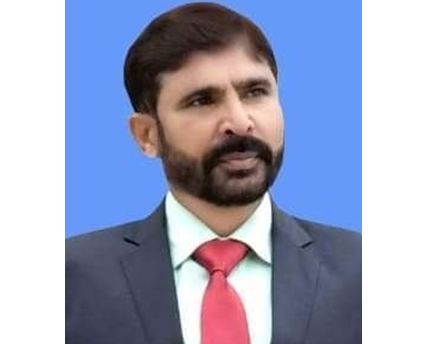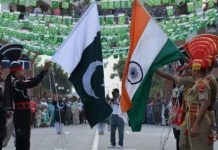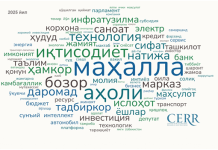Dr. Muhammad Akram zaheer
In 2022, Russia launched a military invasion of Ukraine, primarily driven by its concern over what it perceived as a growing threat from NATO. Moscow feared that Ukraine’s increasing closeness with NATO could lead to a scenario where NATO forces might use Ukraine as a base to launch attacks against Russia. To preempt this perceived threat, Russia decided to act quickly and aggressively. The Russian government believed that Ukraine was weak and internally divided. They assumed that a swift invasion would quickly overpower Ukrainian defenses, leading to the collapse of the Ukrainian government and the subsequent occupation of the country by Russian forces. Moscow expected that this operation would be over in a matter of days or weeks, allowing Russia to assert the United States or NATO could mount control over Ukraine before any significant response. Time was a critical factor in Russia’s strategy. The longer the conflict continued, the greater the risk that Western powers might intervene, either directly or indirectly, to support Ukraine. This would complicate Russia’s military objectives and potentially turn the invasion into a much larger and more dangerous confrontation with NATO. Therefore, the Russian government planned for a short, decisive campaign, anticipating that a quick victory would minimize the chances of Western intervention. However, Russia severely underestimated the resilience and determination of the Ukrainian forces and the Ukrainian people. Instead of folding quickly under pressure, Ukraine mounted a strong and effective defense, stalling the Russian advance and turning the conflict into a prolonged and costly war. The initial assumptions made by Moscow about Ukraine’s weakness proved to be incorrect and the Russian military found itself bogged down in a drawn-out conflict that it had not planned for. This miscalculation has had significant consequences for Russia. The war has dragged on much longer than anticipated, leading to heavy losses in both manpower and resources. The Russian government has been forced to deal with the economic and political fallout of a war that has become increasingly unpopular at home. Moreover, the extended conflict has given the United States and NATO more time to provide military aid and support to Ukraine, further complicating Russia’s military objectives. Despite these challenges, Russia believed it still held one critical advantage on the battlefield. While it may have struggled to achieve its strategic goals, Moscow maintained that it could still dominate the tactical aspects of the war. In other words, even if Russia could not dictate the overall direction of the conflict, it could still control the day-to-day fighting. By doing so, Russia aimed to keep Ukrainian forces on the defensive, preventing them from launching successful counterattacks. This strategy seemed to work for some time, but the situation changed dramatically when Ukrainian forces launched a significant offensive last week in Russia’s Kursk Oblast. This move by Ukraine indicates a shift in the dynamics of the conflict, showing that Ukrainian forces are not only capable of defending their territory but also taking the fight into Russian territory. This development marks a significant escalation in the conflict and suggests that the war may enter a new, potentially more dangerous phase.
Ukraine’s ability to invade Russian territory remains somewhat mysterious. In military operations, certain actions are often deemed impossible, leading to complacency. Russia may have fallen into this pattern, particularly given its history of intelligence failures. When Russia initially launched its invasion of Ukraine, it relied on flawed intelligence and a similar oversight could explain how Ukraine managed to carry out its own offensive. Russia’s recent reliance on North Korea and Iran for additional weaponry further indicates potential vulnerabilities. Ukraine might have recognized this dependence as a moment of weakness, understanding the risks of relying on unstable foreign supply chains and admitting to a shortage of weapons. The exact reasons behind Ukraine’s invasion are less critical than the fact that it successfully executed such an operation. What is particularly noteworthy is how the world learned about this event. The invasion likely occurred on August 6, yet Ukraine maintained operational secrecy for several days until President VolodymyrZelenskyy publicly addressed it on August 10. During this period, the Ukrainian military remained silent, even as they were actively moving. This level of operational discipline is impressive, especially for an army often regarded as brave but not always highly effective. The success of this operation will undoubtedly boost the morale of both Ukrainian soldiers and civilians, reinforcing their resilience in the face of adversity. On the other side, it is puzzling why Moscow chose to announce the attack on its territory, given that for the past two years, Russia has intentionally cultivated an atmosphere of confusion regarding the war. One plausible explanation is that the Russian government recognized the public’s growing fatigue with the conflict and increasing skepticism towards government narratives. In light of these concerns, the Kremlin might have decided that transparent reporting could better manage public perception. Public opinion is a critical factor in any conflict, but it holds particular importance in this war, where Russia’s citizens appear uncertain about the war’s justification and execution.
Ukraine’s successful invasion of Russian territory highlights significant intelligence and strategic missteps by Russia. Ukraine’s ability to keep the operation under wraps for several days demonstrates its growing military discipline and strategic acumen. The impact on morale in Ukraine is likely to be profound, while Russia faces the challenge of maintaining public support for a war that seems increasingly questionable to its citizens. The unfolding dynamics of this conflict will continue to shape the region’s future, with both military actions and public perception playing crucial roles in the outcome.

















